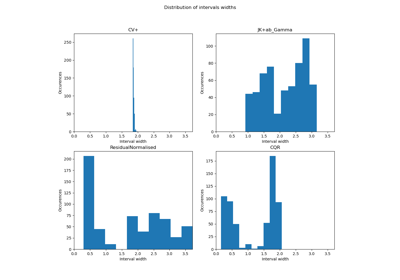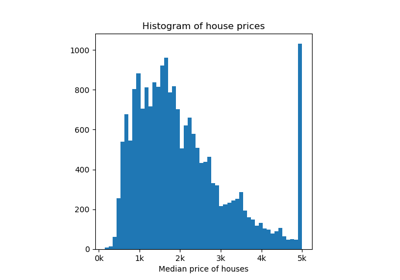mapie.metrics.regression_ssc_score¶
- mapie.metrics.regression_ssc_score(y_true: numpy.ndarray[Any, numpy.dtype[numpy._typing._array_like._ScalarType_co]], y_intervals: numpy.ndarray[Any, numpy.dtype[numpy._typing._array_like._ScalarType_co]], num_bins: int = 3) numpy.ndarray[Any, numpy.dtype[numpy._typing._array_like._ScalarType_co]][source]¶
Aggregate by the minimum for each alpha the Size-Stratified Coverage [3]: returns the maximum violation of the conditional coverage (with the groups defined).
Warning: This metric should be used only with non constant intervals (intervals of different sizes), with constant intervals the result may be misinterpreted.
- Parameters
- y_true: NDArray of shape (n_samples,)
True labels.
- y_intervals: NDArray of shape (n_samples, 2, n_alpha) or (n_samples, 2)
Prediction intervals given by booleans of labels.
- num_bins: int n
Number of groups. Should be less than the number of different interval widths.
- Returns
- NDArray of shape (n_alpha,)
Examples
>>> from mapie.metrics import regression_ssc >>> import numpy as np >>> y_true = np.array([5, 7.5, 9.5]) >>> y_intervals = np.array([ ... [[4, 4], [6, 7.5]], ... [[6.0, 8], [9.0, 10]], ... [[9, 9], [10.0, 10.0]] ... ]) >>> print(regression_ssc_score(y_true, y_intervals, num_bins=2)) [1. 0.5]

